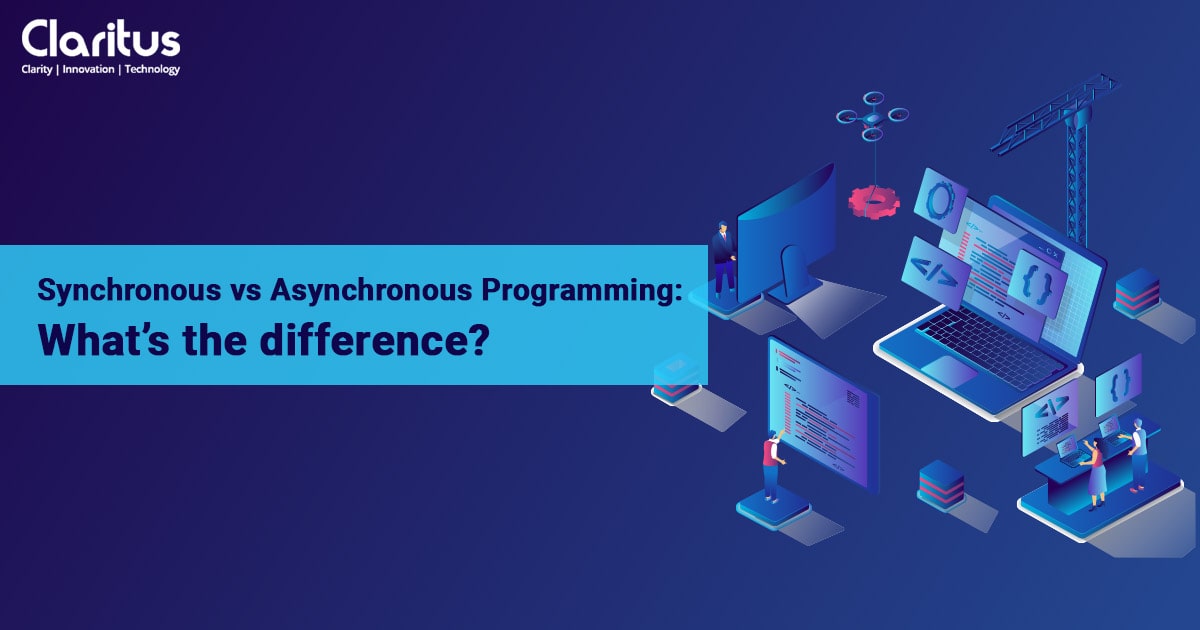Synchronous vs Asynchronous programming: What’s the difference?
Synchronous Programming
It occurs when the execution of assignments takes place sequentially. The performance of tasks happens one by one and only after the completion of one, the next one is unblocked. So, there is a bit of delay involved between two successive operations.
It’s also called “blocking architecture” and is conducive to programming reactive systems. The set of sequences is stringent and the back-to-back tasks are completed in perfect order. When a certain task is being carried out, the commands for other operations are blocked.
This implies that a potentially complicated or knotty job may be prolonged and take some time before its series of functions is accomplished. It’s a single-thread model and that thread is blocked as long as one task is being performed.
Asynchronous Programming
This is based on non-blocking input and output (I/O) protocol. It’s a multithread model which usually applies to networking and communications. Being a non-blocking architecture, it does not work in a sequential or hierarchical order. Therefore, another assignment can be performed easily before the previous one is finished.
As a result, multiple tasks can be dealt with in unison and more assignments completed in a very reasonable time frame. It is generally related to parallelization, where independent tasks run in parallel, or the assignment is broken into pieces where each piece can function simultaneously and independently. At the same time, while multiple requests run concurrently, a failure of one request does in no way affect another one.
Differences in use
In some cases, Synchronous programming may be the best alternative.
1. It’s ideal in a situation where there is an uncomplicated assignment not in need of a lot of processing power. String manipulations and simple calculations are cases in point.
2. Synchronous programming may be a very good option to consider in situations of real-time applications like interactive simulations or games. This ensures that the application developed is accurate and responsive.
3. Due to a limited number of race conditions, it’s a better option for a programme in need of a tight control flow.
4. Synchronous programming is simpler to use and comprehend for debugging code than asynchronous programming.
5. It may be the only choice for working in a single threaded environment.
Asynchronous programming is necessary in the following scenarios.
1. Asynchronous programming is ideal for tasks such as database queries, network requests or file I/O which are slow and time-consuming.
2. It enhances the user experience of mobile apps. It keeps the app responsive and does not permit blocking the main thread or User Interface (UI).
3. When there is a significant number of requests or users, the application needs to be scaled. In such a situation, asynchronous programming is very useful and potent.
4. Asynchronous programming decreases the hazard of memory leaks or operational and functional glitches. It can also be more effective and adept at managing resources such as CPU or memory usage.
5. When the user is not seriously using the app, asynchronous programming allows to work in the background unhindered, which includes push notifications, downloading and uploading data etc.
Applications
Synchronous Programming
1. It’s great for loading a web-page and facilitates Search Engine Optimization (SEO) engines to find and categorize a page’s contents easily.
2. Video rendering is an operation which almost entirely engages a CPU and running any other task parallelly may overload it. So, this task is best suited for Synchronous programming.
Asynchronous Programming
1. It’s ideal for database manipulation. Retrieving information from large databases takes a lot of time. A separate thread may be utilized for it while waiting for answers to queries and the rest of the functions may run parallelly and seamlessly.
2. Multiple threads can be utilized for the process of updating every part in real-time, for a complex dashboard with loads of information on offer.
The points mentioned above wrap up the important dissimilarities between the two.

